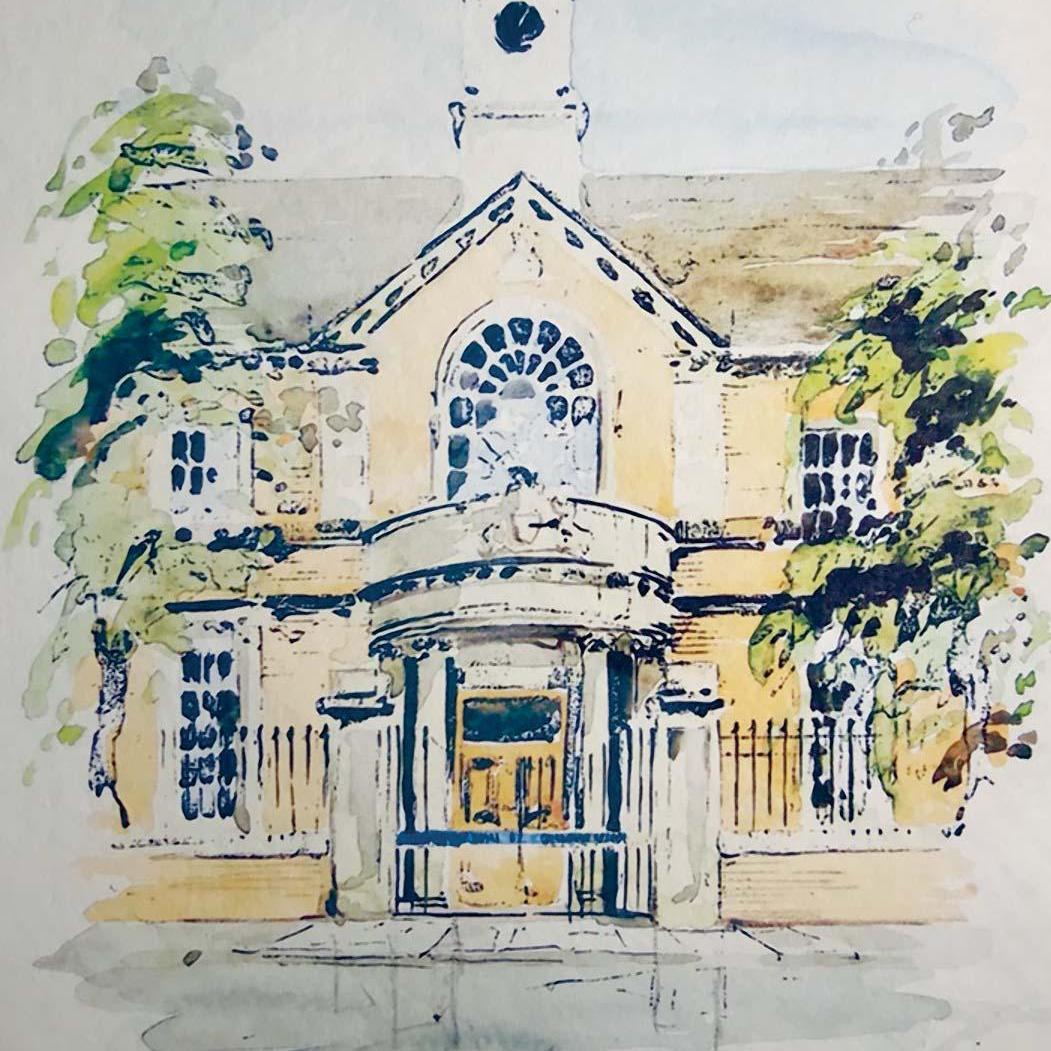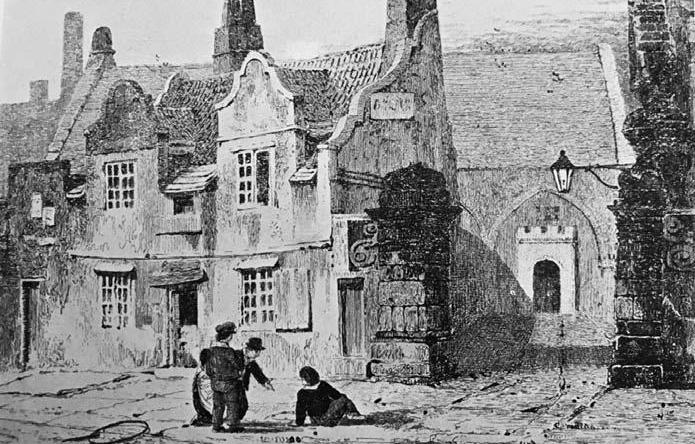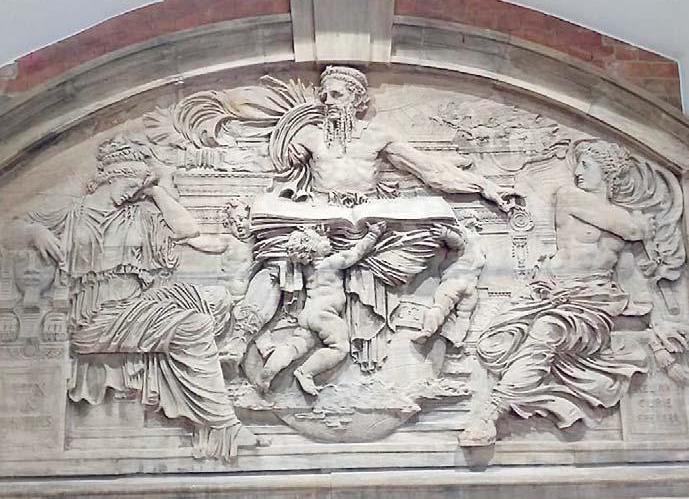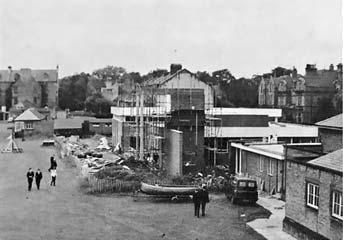
5 minute read
THE BUILDINGS OF THE RGS THE EDITOR
A HISTORY OF THE RGS IN ITS BUILDINGS
BY THE EDITOR
Advertisement
It was the Church and the knowledge of its doctrines which gave the lead to the provision of education by those equipped to teach.
1992 Watercolour by DM Spark (46-54)

AR Laws, who taught at both Rye Hill and Eskdale Terrace from 1892 to 1928, in his two part Schola Novocastrensis (1925) writes about how Bede (c 673-735), from the age of seven onwards, was educated in singing at Wearmouth, the Study of Scripture and in the regular observances of the Church. The food, books and teaching of such boys and youths was free. The centuries that followed witnessed the rise of grammar schools attached to collegiate churches and cathedrals. By the 14th Century, every major town in England possessed a grammar school. There were almost certainly song schools of various churches in Newcastle, where boys and girls were taught both in singing and playing various instruments. It also seems that there was a grammar school in the town around the end of the 15th Century, if not earlier.
Above: The School at the Hospital of St Mary the Virgin. Below: Pillars at the Express Inn, now the site of the Waiting Rooms Bar. Prefects with the ‘Westgate pillars’ in the 1940s.
But we are more concerned here with Thomas Horsley’s School, whose foundation was laid down in his will of 1525. Schools existed in the grounds of, if not in, the church itself and the first building was in St Nicholas’s Churchyard. The exact site is thought to be in the back of the old National Provincial Bank, on the corner of Dean Street and Mosley Street, where the School remained until 1607, although the old building was retained for some time as a Writing School.
After the charter bestowed on the town by Queen Elizabeth 1, it was to the Hospital of St. Mary the Virgin, ‘in the Westgate’ that the Royal Grammar School (now a royal foundation) was to be housed from 1607 until 1844. The northwestern gateway was close to the Stephenson monument, one of its pillars still being attached to the corner of a bar, once the site of the Express Inn and the old Douglas Hotel Long Bar, made famous by the film Get Carter. It was here that the Corporation and the School united to elect the new Mayor on the first Monday following Michaelmas Day (29 September). There is a current proposal by an ON in some way to reenact this ceremony which is fully described in the small book The Story of our School by teachers MrJB Brodie (18981928) and MrAR Laws (1892-1928) first published in 1924 and updated in 1936 and 1948. Like all pupils of the time, I was presented with a copy on arrival in the Junior School.
The coming of the railways caused the removal of the School once again. The whole area around what is now Neville Street was to be cleared for the building of the Central Station, designed by John Dobson and opened by Queen



Victoria and Prince Albert in 1850. By then, the RGS was in somewhat of a decline and had moved to three rooms in Forth House in 1844, near the site of August Pugin’s St Mary’s Catholic Cathedral, completed in that year. These were the days after the School flourished under the Headship of Hugh Moises (1749-87) and to a much lesser extent under his nephew Edward Moises (1787-1829). The School was struggling against formidable competition from Dr John Bruce and his Academy in Percy Street. Under the Headship of Dr James Snape (1847-71), the School moved again to a nearby domestic house at 6 Charlotte Square in 1848, the first home of the RGS to survive until the present day. A photograph of the boys taken in 1867 at No.6 appears to show them outside No.8, when compared with a modern photo. These premises were well beyond the needs of the two staff and dozen pupils. However, by the early 1860s, the School numbers had grown to over 200. The railway was bringing boys into the area from outlying areas and an emboldened Council used its influence to make the surplus annual income from the Virgin Mary Hospital Trust for the enhanced benefit of the School. This included the building of new premises on land which belonged to the Trust at Rye Hill, completed in 1870. The choice of this area was ultimately to lead to the move to Jesmond, ironic in that the alternative site in Barras Bridge would have cost £3,000, rather than that at Rye Hill which cost £11,000. With Armstrong’s factories only a mile away, the area was to become more industrial than residential, and as Brian Mains (76-05) and Anthony Tuck (48-59) commented in their History of the School and its Community (1986) ‘how ironical it was when in 1897 the School opened a branch in Barras Bridge to cater for the middle-class districts of Jesmond and Gosforth.’
Dr Snape was succeeded in 1873 by Brian Christopherson, whose tenure was to last until 1883. Difficulties with the provision of sports grounds in the locality meant football and cricket were curtailed and paper chases and cycling were the main physical activities. Playing fields at Burdon Terrace in Jesmond were a remedy, but these were lost when the Fleming Memorial Hospital was built. Although the Rye Hill School was well appointed for its day, the 20th Century was beckoning and a number of Jesmond and Gosforth residents signed a petition to have a ‘Branch School’ established in their part of the City. This was opened in 1897 at 1 St Thomas’ Place and later at 6 Jesmond High Terrace, lasting for nine years until 1906. The Rye Hill buildings were sold to the Council and became Rutherford Girls’ School.
Above: Aerial view showing All-Weather Playing Area Below: PAC and Miller Theatre under construction, 1993











